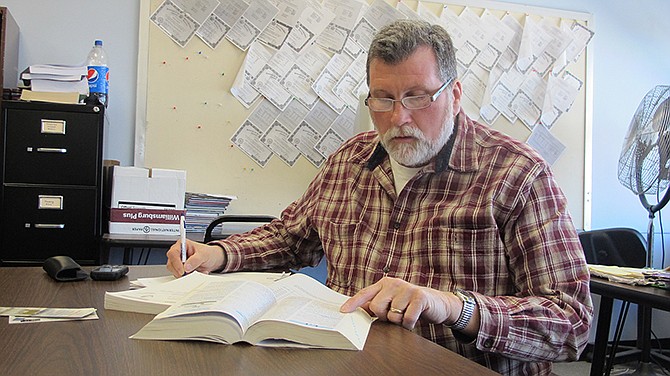CHEEKTOWAGA, N.Y. (AP) - The number of people taking high school equivalency exams in the U.S. plummeted - and the percentage who passed fell, too - in the year after a revamped, Common Core-inspired GED was introduced along with two new competing tests.
Test administrators say a rush by people to take the old exam in 2013 before the newer ones were rolled out resulted in fewer test-takers in 2014. And the harder questions on the new exams led to lower scores.
The GED, or General Educational Development test, was overhauled last year to reflect some of the Common Core standards that have been adopted by most states and emphasize critical thinking. In 2014, two new high school equivalency exams that also incorporate some of those standards were introduced by other testing companies.
All three tests require students desiring a diploma to show higher-level skills, such as writing essays using evidence they pull from reading materials they are given. In math, students must interpret data and plot equations to solve problems.
Some of the before-and-after results over the past three years:
• In 2012, before any changes were announced, 581,000 people took the GED, and 69 percent passed.
• In 2013, 713,000 people took the GED, many rushing to get in ahead of the changes, and 76 percent passed.
• In 2014, the first year of the changes, 316,000 people took one of the tests, with about 62 percent passing, regardless of which exam they took.
The new types of questions left some test-takers frustrated.
Larry Gorsk said the warnings that the new TASC test adopted by New York state would be harder than the old GED proved true when he failed in November.
"The math was the hardest part; it was all new stuff. I'm never going to use any of it," said Gorski, 58, who plans to try again for the diploma he needs to look for new work after the graphics plant where he was a printer for 32 years closed.
Exam officials said testing and pass rates are up so far in 2015, signaling the bumps are being smoothed out. GED spokesman CT Turner put the January and February pass rate for the GED at 70 percent.
"It's been a real challenge for us to make sure our teachers are all kept abreast of what they should be covering before we send people to the test," said Michael Swords, who administered the GED for decades in suburban Buffalo before New York replaced it last year with one of the competing exams.
The GED was created to help World War II veterans who dropped out of high school get their diplomas and go on to college, using the benefits available under the GI Bill. The nonprofit American Council on Education, which has owned the test since its inception, brought in for-profit Pearson Vue Testing to produce the new version.
With word the new GED would cost more and move from paper and pencil to computer, several states went looking for alternatives to what had been the only game in town since 1942.
The TASC (Test Assessing Secondary Completion), offered by CTB/McGraw-Hill, has been adopted by nine states, and the HiSET (High School Equivalency Test) from the Educational Testing Service is used in 14 states. The GED remains in 40 states. California, Nevada, New Jersey, North Carolina and Wyoming offer all three exams.
As she worked on practice math problems during a TASC preparation class, Cheryl Keller said knowing the material is similar to what she may see in college can only help. She plans to study nursing after getting her high school equivalency diploma.
"You can't freak out over it," the 34-year-old mother of two said. "You take it until you get it right. Think positive."
One of the biggest first-year challenges was getting test-takers, colleges and employers to understand there are now three tests out there and passing any one of them has the same result: a state-issued high school equivalency diploma.
"It's the way people talk, "I got my GED,'" said Ellen Haley, president of CTB/McGraw-Hill. "Even job applications say, "You must have your GED.'"

